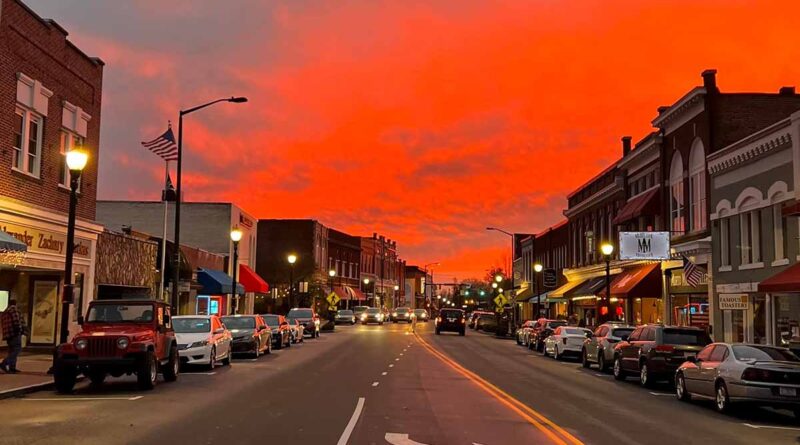History of Mooresville North Carolina
Mooresville, North Carolina, has a fascinating history that reflects the broader development of the American South. From its early days as an agricultural settlement to its emergence as a bustling hub for the motorsports industry, Mooresville’s story is one of growth, resilience, and transformation. Let’s explore the key moments and people who shaped this historic town.
The Founding of Mooresville
The roots of Mooresville trace back to the early 19th century when European settlers first moved into the area. The region, originally inhabited by Native American tribes, particularly the Catawba, saw an influx of settlers following the end of the Revolutionary War. Farmers established small plantations, growing tobacco, cotton, and other crops that fueled the early economy.
In 1856, a pivotal event occurred that would change the trajectory of the area forever: the construction of a railroad line. With the introduction of the Atlantic, Tennessee, and Ohio Railroad, what was once a small farming community started its transformation into a town. This railroad provided new opportunities for trade, commerce, and connectivity, leading to the formal incorporation of Mooresville in 1873.
The Influence of John Franklin Moore
Mooresville owes its name and much of its early development to a man named John Franklin Moore, an early settler and key figure in the town’s history. Moore played an instrumental role in the area’s growth by donating land for the railroad station and helping facilitate the town’s early economic ventures.
In 1856, he established a depot along the new railway line, recognizing the potential of rail transportation to drive commerce. His foresight paid off, as the town quickly began to grow, with new businesses, homes, and services cropping up to support the growing population. After his death, the town was named “Mooresville” in his honor, solidifying his legacy as the town’s founding father.
The Civil War and Its Aftermath
Like much of the American South, Mooresville felt the profound impact of the Civil War. The conflict disrupted daily life, caused economic hardships, and reshaped the region’s social fabric. While the town itself did not witness major battles, it was deeply affected by the war’s broader consequences, particularly the devastation of the agricultural economy and the abolition of slavery.
Post-war reconstruction was a challenging time for Mooresville. The economy, heavily reliant on agriculture, struggled to recover. However, the railroad continued to play a critical role in keeping the town connected to larger markets, which helped it rebound slowly but steadily. The late 19th century saw renewed efforts to diversify the economy and rebuild infrastructure, which would set the stage for future growth.
The Rise of the Cotton Industry
At the turn of the 20th century, Mooresville found a new economic engine in the cotton industry. Cotton mills began to spring up around town, providing jobs and boosting local industry. The most notable of these was the Mooresville Cotton Mill, which opened in 1893 and quickly became a cornerstone of the town’s economy.
The cotton mills not only provided employment but also fostered a sense of community. Workers and their families lived in mill villages, creating tight-knit neighborhoods where people worked, lived, and socialized together. This industrial boom led to the expansion of the town’s infrastructure, including schools, churches, and social services, helping Mooresville evolve from a small rural settlement into a thriving industrial town.
Mooresville in the Early 20th Century
The early 20th century was a period of steady growth for Mooresville. The town expanded beyond its original railroad-centric layout, with new neighborhoods and businesses being developed to accommodate a growing population. The cotton mills remained the backbone of the local economy, and the town’s infrastructure continued to improve.
During this time, the town began to develop a sense of identity beyond its agricultural and industrial roots. Civic organizations, cultural institutions, and public spaces, such as libraries and parks, emerged, contributing to a more vibrant community life. The introduction of electricity and modern conveniences in the early 1900s further contributed to the town’s modernization.
The Decline of the Textile Industry
By the mid-20th century, Mooresville’s cotton-based economy began to face challenges. The textile industry, once the lifeblood of the town, experienced a slow decline due to changes in global manufacturing and increasing competition from overseas markets. Many of the town’s cotton mills were forced to close, leading to economic uncertainty and job losses.
However, Mooresville’s community was resilient. As the textile industry waned, the town’s leaders and citizens began to look for new ways to revitalize the local economy. This period of transition would eventually lead to one of the most significant transformations in Mooresville’s history.
The Emergence of Motorsports: Race City USA
In the 1980s and 1990s, Mooresville found new life in an unexpected industry—motorsports. The town’s proximity to Charlotte, home to many NASCAR teams, made it an ideal location for race teams and related businesses. The town quickly became known as “Race City USA,” a hub for NASCAR racing teams, manufacturers, and suppliers.
The motorsports industry brought new jobs, investments, and global recognition to Mooresville. Race shops, testing facilities, and engineering firms sprang up throughout the area, making the town a key player in the racing world. NASCAR legends, such as Dale Earnhardt, further cemented the town’s reputation as a racing mecca.
The motorsports boom not only revitalized the local economy but also attracted tourists and racing fans from around the world. Mooresville’s association with NASCAR remains a point of pride for the town, and it continues to be home to many of the sport’s top teams and drivers.
Mooresville in the 21st Century
In recent decades, Mooresville has continued to grow and evolve. The town has embraced its rich history while also looking toward the future. With a population that has more than doubled since 2000, Mooresville has developed into a vibrant suburban community within the greater Charlotte metropolitan area.
The town’s economy has diversified further, with significant growth in sectors such as technology, healthcare, and retail. Mooresville is also home to the corporate headquarters of Lowe’s Companies, Inc., a Fortune 500 company, which has brought additional jobs and economic activity to the region.
Despite its growth, Mooresville has managed to maintain its small-town charm. Historic downtown Mooresville, with its well-preserved buildings, shops, and restaurants, serves as a reminder of the town’s past while continuing to play a central role in community life.
Education and Innovation
In addition to its economic diversification, Mooresville has become known for its focus on education and innovation. The town’s public school system, particularly the Mooresville Graded School District, has gained national recognition for its use of technology in the classroom. The district’s “digital conversion” initiative, which provided every student with a laptop, has been hailed as a model for integrating technology into education.
This focus on innovation is reflected throughout the community, with numerous initiatives aimed at improving quality of life, promoting sustainability, and encouraging civic engagement. Mooresville’s leaders have worked to ensure that the town remains an attractive place to live, work, and raise a family.
Mooresville Today: A Blend of Tradition and Progress
Today, Mooresville is a town that skillfully blends its rich historical heritage with a forward-looking spirit of innovation. Whether through its historical preservation efforts, its thriving motorsports industry, or its embrace of modern technologies, Mooresville continues to be a dynamic and growing community.
Visitors and residents alike can experience the town’s past through landmarks like the Mooresville Cotton Mill, now a mixed-use development, and its vibrant downtown district. At the same time, Mooresville’s future is being shaped by cutting-edge industries and new opportunities for growth.
In many ways, Mooresville’s history reflects the broader American story—one of perseverance, reinvention, and the continuous pursuit of a better future. Its journey from a railroad town to “Race City USA” is a testament to the enduring spirit of its people and the community’s ability to adapt to changing times.
Discover more from City Towner
Subscribe to get the latest posts sent to your email.





I have lived in Mooresville for 76 years. RACING IN THE STREET never happened. This news article fails to provide accurate information about the actual lifestyle and growth of Mooresville.